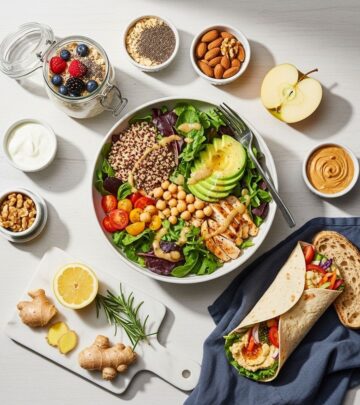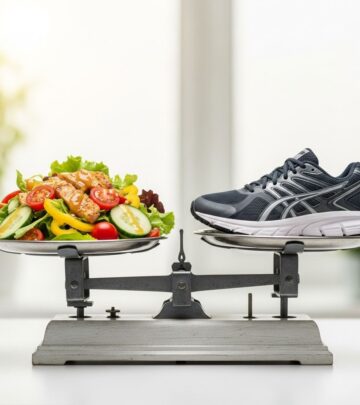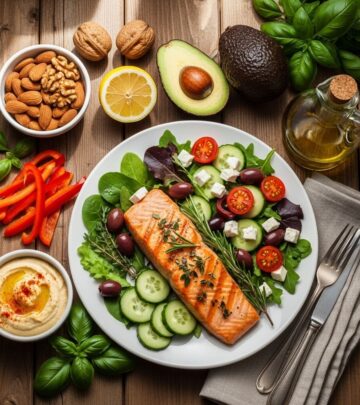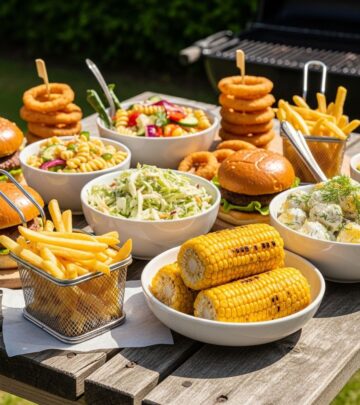American vs. English Cucumbers: Differences, Uses & Nutrition
A comprehensive guide to the appearance, taste, nutrition, and best uses of American and English cucumbers.
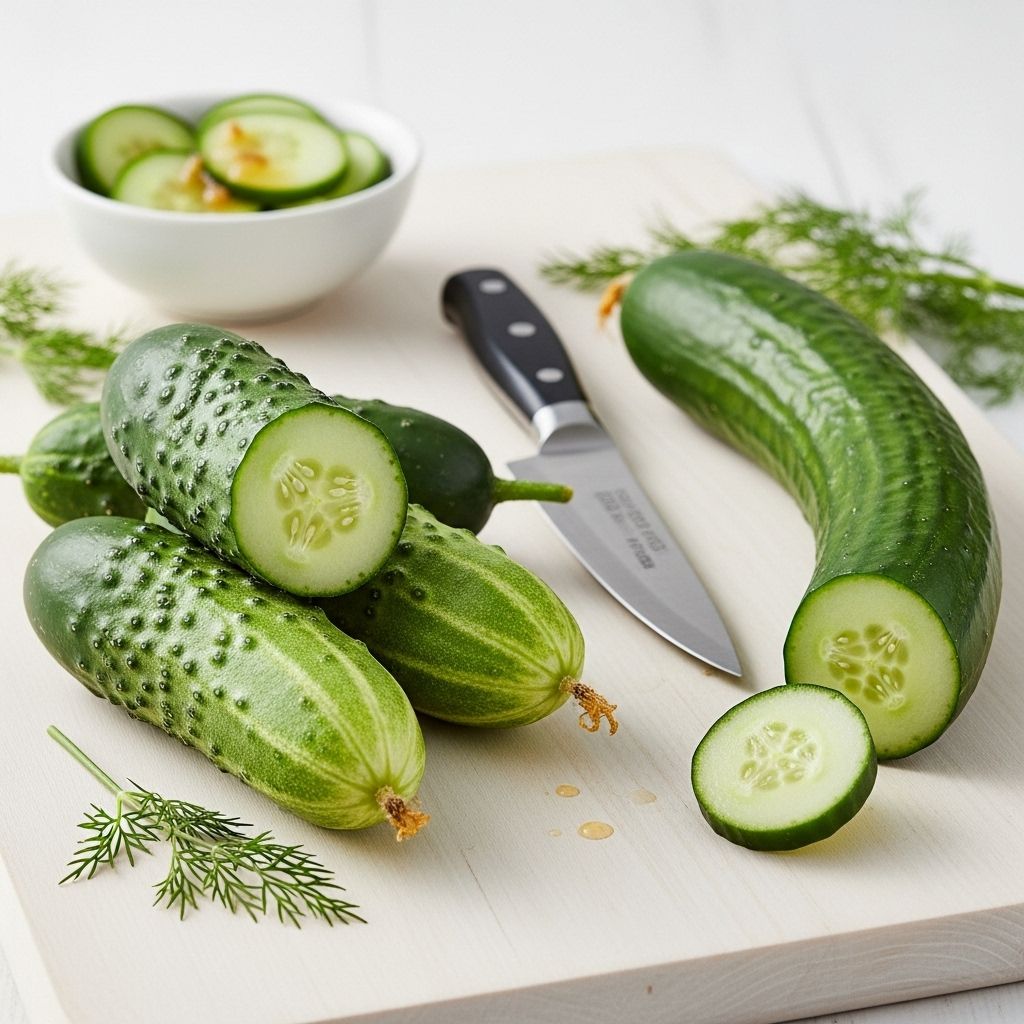
American vs. English Cucumbers: What’s the Difference?
Cucumbers are beloved worldwide for their crisp texture and refreshing flavor, but not all cucumbers are created equal. The American cucumber and English cucumber—sometimes called hothouse or seedless cucumbers—are the two most widely available types in supermarkets in the United States. Though they seem similar at first glance, they differ in appearance, taste, texture, and culinary uses. Whether you are planning a salad, a snack, or a pickling project, understanding these differences will help you select the right cucumber for your needs.
What Is an American Cucumber?
The American cucumber, sometimes referred to as the slicing cucumber or regular cucumber, is what many people in the U.S. picture when they think of cucumbers. It is characterized by:
- Shape and Size: Thick, relatively short, with a stout cylindrical shape. Typically, they are 8-10 inches long.
- Skin: Dark green, waxy, and often covered in noticeable bumps or ridges. Supermarkets frequently coat these cucumbers with food-grade wax to keep them fresh and hydrated.
- Seeds: Contains large, prominent seeds concentrated in the center, which may be tough or slightly bitter.
- Flavor: Has a crisp, mild flavor that can at times be slightly bitter, especially near the skin and seeds.
American cucumbers are the most affordable and widely available. They are versatile enough for salads, crudité platters, sandwiches, or pickling projects.
What Is an English Cucumber?
The English cucumber—also known as the European, seedless, hothouse, or telegraph cucumber—is different in several key ways:
- Shape and Size: Noticeably longer and more slender, usually stretching 10-14 inches or more. Their cylindrical shape is almost perfectly uniform.
- Skin: Thin, delicate, and dark green, with minimal bumps. English cucumbers are generally sold in plastic wrap to protect the skin and maintain moisture, as they are not waxed.
- Seeds: Contains much smaller, nearly edible seeds, making the interior less watery and the texture slightly more tender.
- Flavor: Exceptionally mild, crisp, and without any bitterness; often described as sweet and refreshing.
English cucumbers are favored for their ease of use—no peeling necessary—and for their pleasant texture in slices or spears. They are also more expensive and sometimes considered a premium produce item.
Key Differences Between American and English Cucumbers
| Cucumber Type | Appearance | Seed Size & Quantity | Skin | Flavor | Common Packaging |
|---|---|---|---|---|---|
| American | Short, thick, bumpy, dark green | Large seeds, many | Thick, waxed, bumpy | Mild to slightly bitter | Loose, unwapped, waxed |
| English | Long, slender, smooth, dark green | Small seeds, few | Thin, unwaxed, smooth | Mild, sweet, crisp | Wrapped in plastic film |
Nutrition: American vs. English Cucumbers
Both American and English cucumbers are made up of over 95% water, making them exceptionally hydrating and low in calories. Their nutrition profiles are remarkably similar, with subtle distinctions due to variety and preparation method.
- Calories: Both types are low-calorie, with about 15-20 calories per cup of sliced cucumber.
- Vitamins & Minerals: Rich in vitamin K, some vitamin C, potassium, magnesium, and trace antioxidants.
- Fiber: Most of the fiber is in the skin. English cucumbers, being thin-skinned, offer slightly less fiber than American cucumbers if the latter’s skin is left on.
- Other Benefits: High water content helps with hydration, digestion, and feeling full without extra calories.
The seeds in American cucumbers are larger and contain more plant compounds, but unless seeds are removed or peeled, this has only a minor impact on nutrition in a typical serving size.
How to Select and Store Cucumbers
- American Cucumbers: Look for firm, glossy cucumbers with unblemished, deep green skin. If waxed, the surface will appear shiny. Avoid any that are shriveled or have soft spots.
- English Cucumbers: Choose cucumbers that are straight and free of soft or yellow spots. The plastic wrap should be tight and intact (though it should be removed after purchase for proper storage).
For both types, cucumbers should be stored in the refrigerator. Keep them whole, unwashed, and in a loose produce bag or crisp drawer. American cucumbers, with their thicker skin and wax coating, last up to a week. English cucumbers are more delicate; once the plastic wrapping is removed, use within 3-5 days for the best texture and flavor.
Best Uses in the Kitchen
Choosing between American and English cucumbers depends on the recipe and desired final texture.
- American Cucumbers:
- Best for pickling: Thick skins and robust flavor hold up well to brining.
- Salads and sandwiches: Peel and seed for a crisper, less bitter bite.
- Crudité platters: Cut into spears; may want to peel for milder flavor.
- English Cucumbers:
- Raw applications: No need to peel or deseed—slice and add directly to salads, sandwiches, or sushi.
- Elegant presentations: Thin, even slices for tea sandwiches, canapés, or refreshing drinks (e.g., cucumber water).
- Excellent in dips and spreads: More delicate and less watery, integrates well into yogurt-based dips like tzatziki.
Cucumber Substitution Tips
- If a recipe calls for English cucumber and only American is available, peel and seed the American cucumber for a similar mildness and texture.
- For pickles, American cucumbers are traditionally preferred, but English cucumbers can work for quick refrigerator pickles.
Common Questions About Cucumbers
Q: Can you eat the skin of both American and English cucumbers?
A: Yes, both skins are edible. However, American cucumber skin is often waxed and thicker, which can taste bitter or be tough to chew. Peeling is recommended unless using organic or unwaxed cucumbers. English cucumber skin is thinner and unwaxed, so it is almost always eaten.
Q: Are English cucumbers always seedless?
A: No. English cucumbers are marketed as “seedless” because their seeds are so small and tender, they are barely noticeable, but all cucumbers have some seeds.
Q: How do you store cucumbers for maximum freshness?
A: Store whole cucumbers in the refrigerator’s crisper drawer, unwashed, inside a breathable bag. English cucumbers should be removed from plastic wrap once home for longer keeping.
Q: Why are American cucumbers often waxed?
A: The wax coating slows water loss, prolonging shelf life, and gives them a shiny appearance. The wax is food-grade and safe to eat but is best washed or peeled off if preferred.
Q: Which variety is healthier?
A: Both American and English cucumbers are low in calories, sugars, and fat, and high in water, making them equally healthy when incorporated into a balanced diet.
Summary: Which Cucumber Should You Choose?
The choice between American cucumbers and English cucumbers often comes down to personal preference, planned use, and sometimes, budget. If you want a mild, easy-to-eat cucumber for raw application or elegant presentations, opt for English. For a more affordable and versatile cucumber, especially for pickling, reach for the American type. Both varieties offer a crisp, refreshing way to hydrate and add crunch to salads, snacks, and more.
Frequently Asked Questions (FAQs)
Q: Can you substitute English cucumber for American cucumber in all recipes?
A: In most raw dishes, yes. For pickling, American cucumbers are a better fit, but English cucumbers can be used in quick pickles.
Q: Is there a difference in pesticide use or organic availability?
A: Both types are available organic and conventional. English cucumbers, grown in hothouses, may require fewer pesticides, but it’s best to check labels or ask your grocer.
Q: How should you prepare cucumbers to reduce bitterness?
A: Peel the skin and remove the seeds—especially from American cucumbers—for a milder, less bitter taste.
Q: Do cucumbers lose nutrition if peeled?
A: Yes, peeling removes a portion of the fiber, vitamins, and antioxidants, though they still remain hydrating and low-calorie.
Related Cucumber Varieties
- Persian Cucumbers: Smaller and thinner than English, with tender skin, tiny seeds, and a naturally sweet flavor. Excellent for snacking and salads.
- Kirby Cucumbers: Crunchy, small cucumbers ideal for pickling but also tasty raw.
No matter which variety you choose, cucumbers make a nutritious, versatile addition to meals year-round.
Read full bio of Sneha Tete


